Investors poured €44 billion (£37.2 billion) into long-term Europe-domiciled funds in July, a haul similar in magnitude to May’s €47 billion, Morningstar Direct data shows.
Global equity markets were still enjoying tailwinds in July before August’s market tumult arrived. The US equity market experienced a notable shift away from large-cap technology stocks and a rotation to small-cap stocks, and overall, it ticked up 1.5% in USD, according to the Morningstar US Market PR Index.
Meanwhile, the European market excluding UK had a more muted performance, while the UK market benefited from strong economic growth and service sector data. Asian markets were mixed: The Japanese market saw the beginnings of underperformance caused by the unwinding of the yen carry trade that led to the sharp market selloff in early August.
Global large-cap blend equity once more was the category that saw the largest net inflows last month. Overall, equity funds took in €15.6 billion. It was a one-sided story: passive strategies gained €15.6 billion, while active equity strategies shed €30 million.
Bond funds attracted a solid €32.3 billion in net inflows in July, the group’s ninth straight month of inflows.
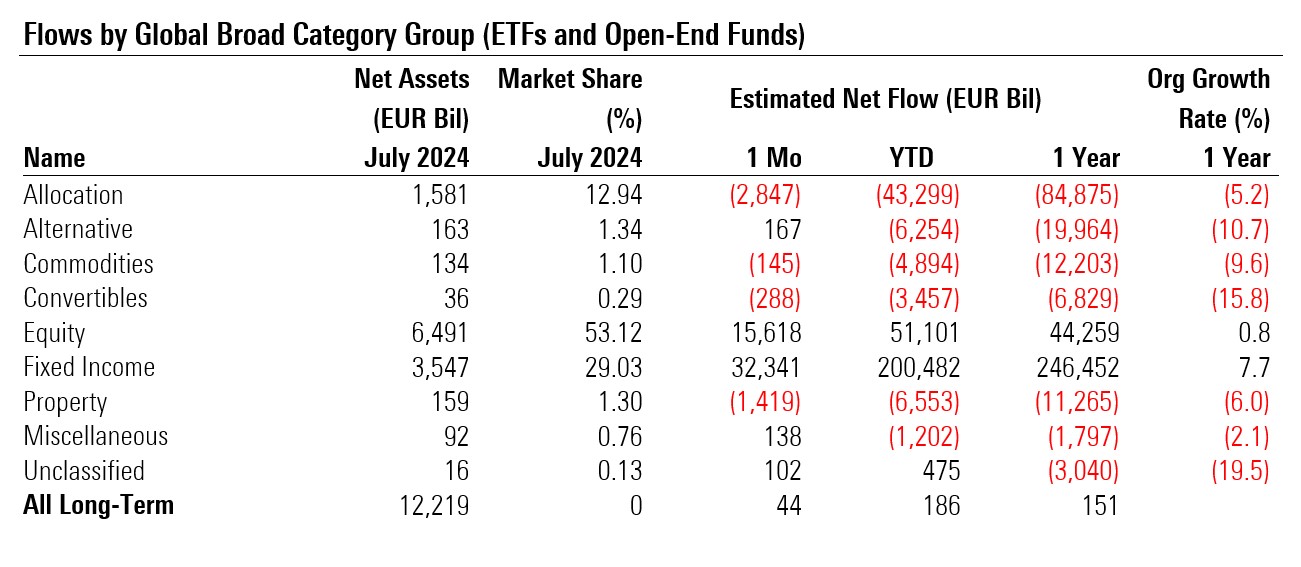 Allocation strategies marked their 14th month of negative net flows, with €2.8 billion walking out the door, bringing total outflows this year up to €43.3 billion. Alternatives, meanwhile, returned to modest positive territory after spending much of 2022, 2023, and 2024 in negative territory, flow-wise.
Allocation strategies marked their 14th month of negative net flows, with €2.8 billion walking out the door, bringing total outflows this year up to €43.3 billion. Alternatives, meanwhile, returned to modest positive territory after spending much of 2022, 2023, and 2024 in negative territory, flow-wise.
Finally, money market funds had €27.5 billion of net new subscriptions, after collecting €28.8 billion in June.
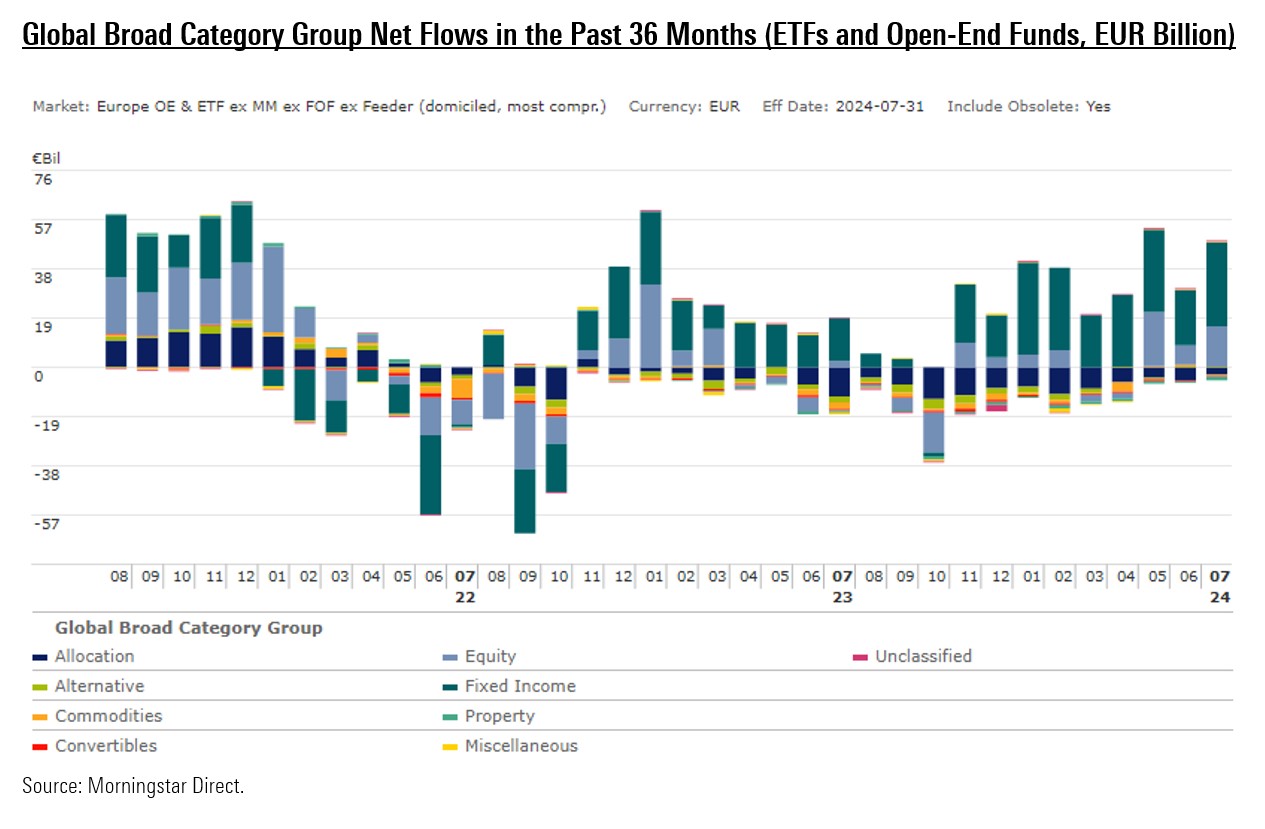
Long-term index funds posted inflows of €24.3 billion in July versus the €19.3 billion garnered by actively managed funds.
Deep-Green Fund Outflows Continue
Funds falling within the scope of Article 8 of the Sustainable Finance Disclosure Regulation had net inflows of €14.5 billion in July. Funds falling under Article 9 (“dark green” strategies) continued to bleed. Article 9 funds saw their 10th consecutive month of outflows, shedding €2.8 billion.
From an organic growth perspective, Article 8 funds showed a 0.26% organic growth rate over the past 12 months. On the other hand, products in the Article 9 group saw a negative 4.6% organic growth rate over the same period.
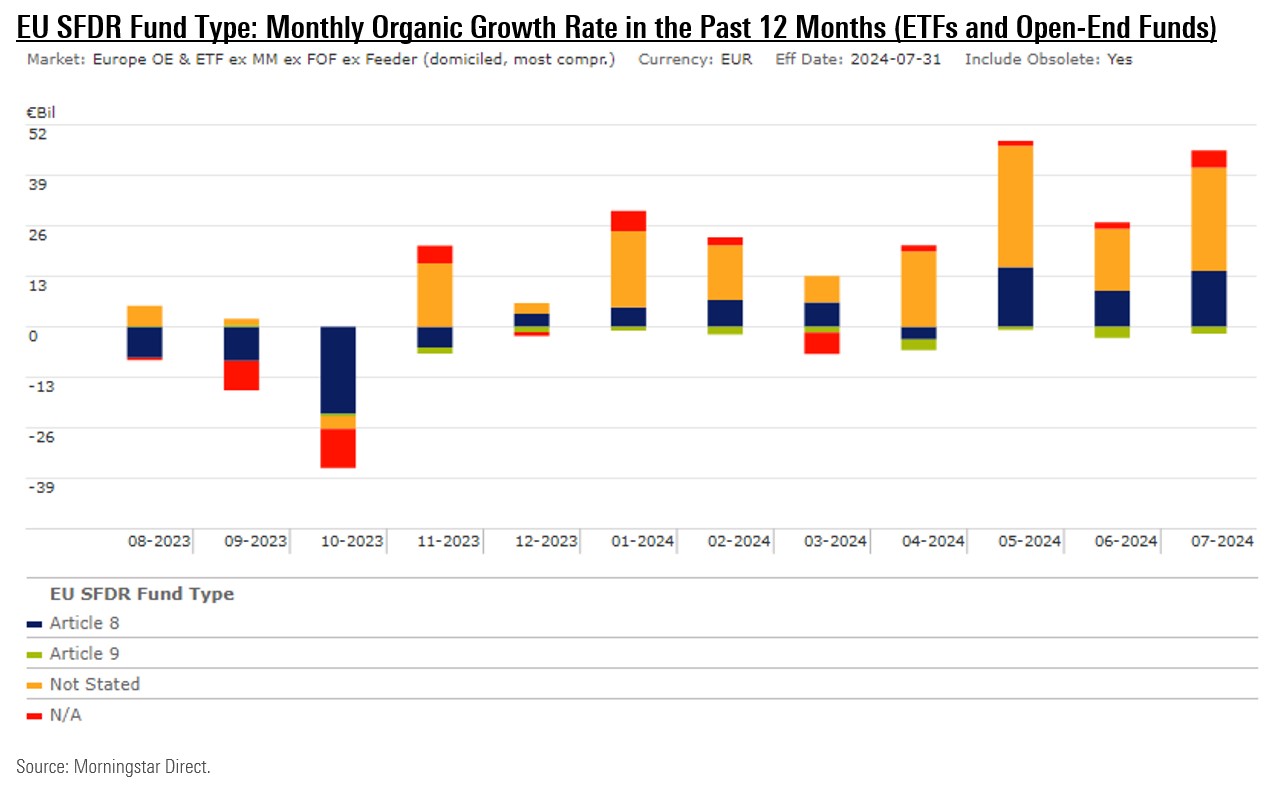
Morningstar Categories: The Leaders and Laggards
Global large-cap blend equity funds were by far the top sellers in July. US large-cap blend equity funds also continued to be popular with European investors. This category posted the highest inflows since March 2023.
Investors withdrew a modest sum from eurozone large caps. China equity funds have had outflows in 15 of the past 16 months.
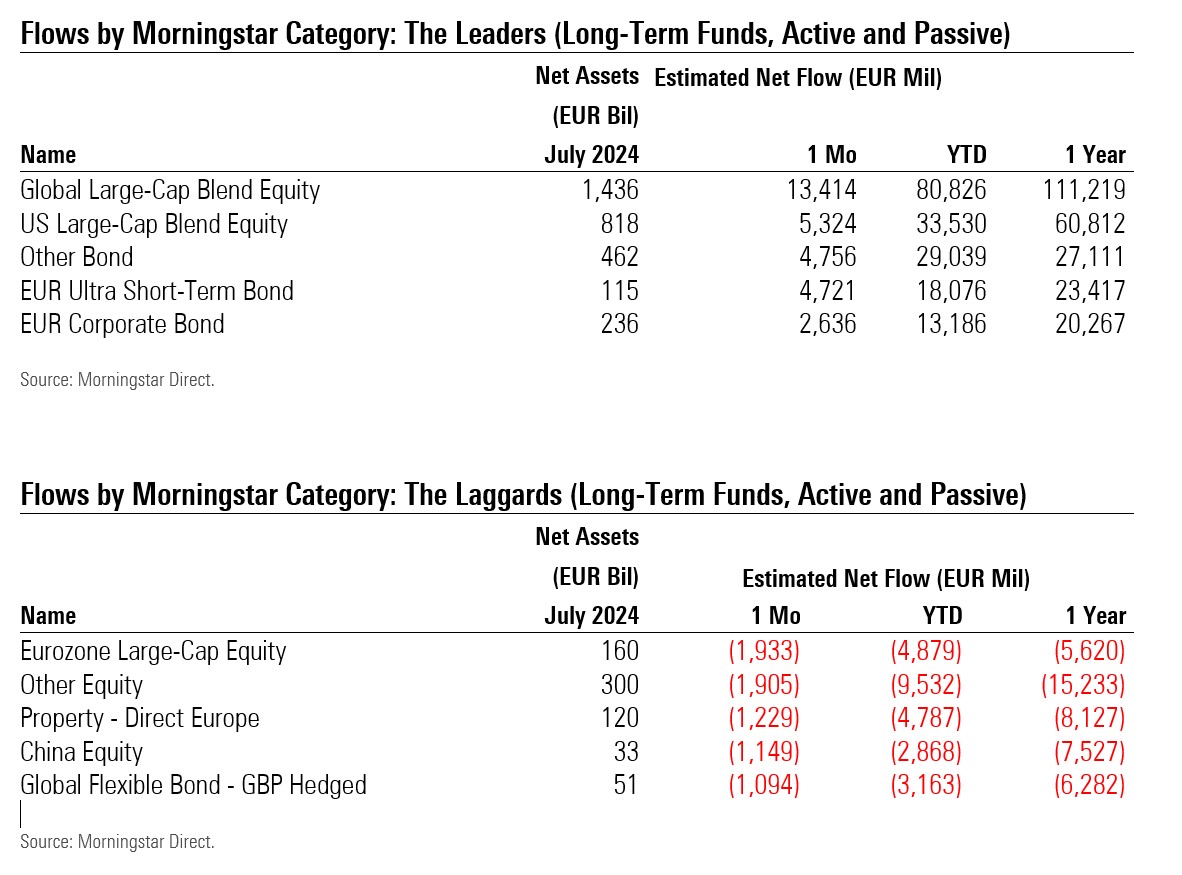
Fund Providers: The Leaders and Laggards
iShares topped the list of asset-gatherers last month, with €7.4 billion of net inflows in July. Swedish fund group Ruth Asset Management came in second as large outflows due to a liquidation in June were offset by corresponding inflows into a new fund in July. PIMCO and iShares have grown at nearly a 10% rate over the past year.
Providers that experienced outflows had relatively modest sums exit their coffers. Baillie Gifford assets have fallen from their peak of €93 billion in October 2021 to €45 billion at the end of July. The growth-oriented firm has endured 31 straight months of outflows.
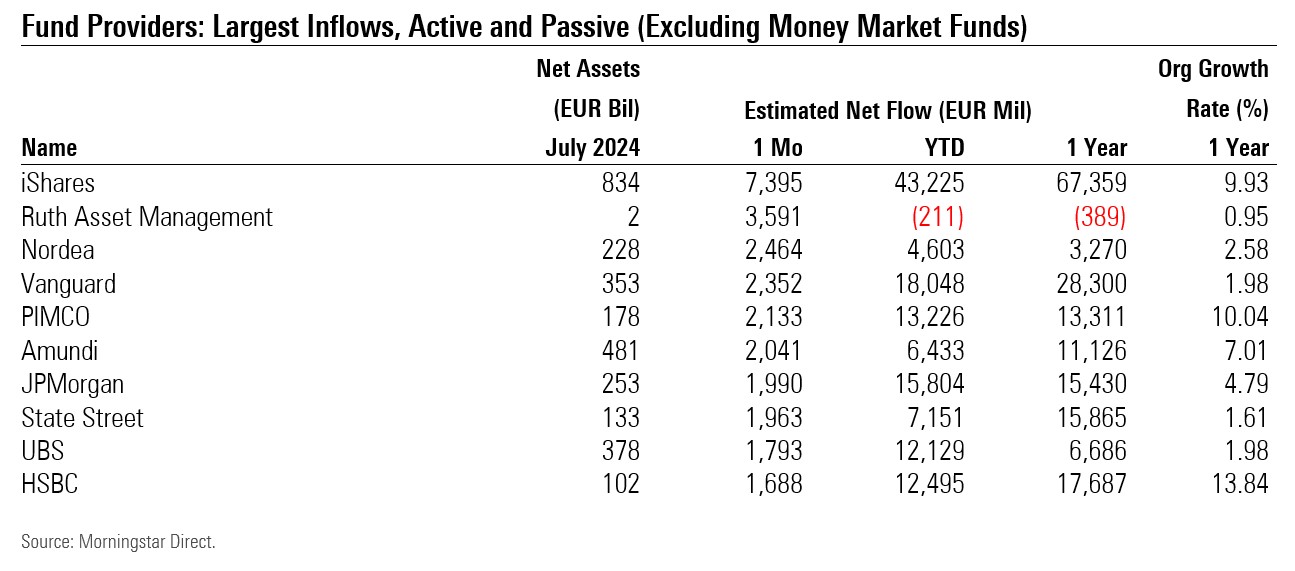
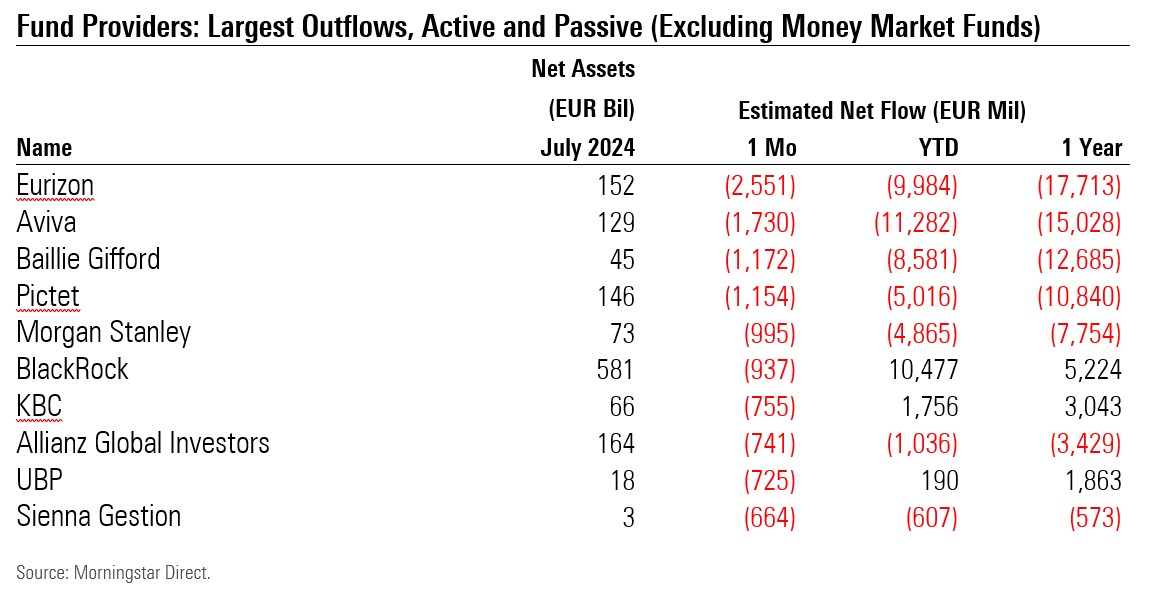
Note: The Aug. 20 report contained incorrect flows for three funds: M&G (Lux) Asian Local Currency Bond Fund, M&G (Lux) Asian Corporate Bond Fund, and BlackRock Japan Equity 1 Fund. The impact of these errors cascaded to all grouping levels, including Branding Name, Morningstar Category, and Global Category Group. As a result, many of the figures in the revised report differ from the original





